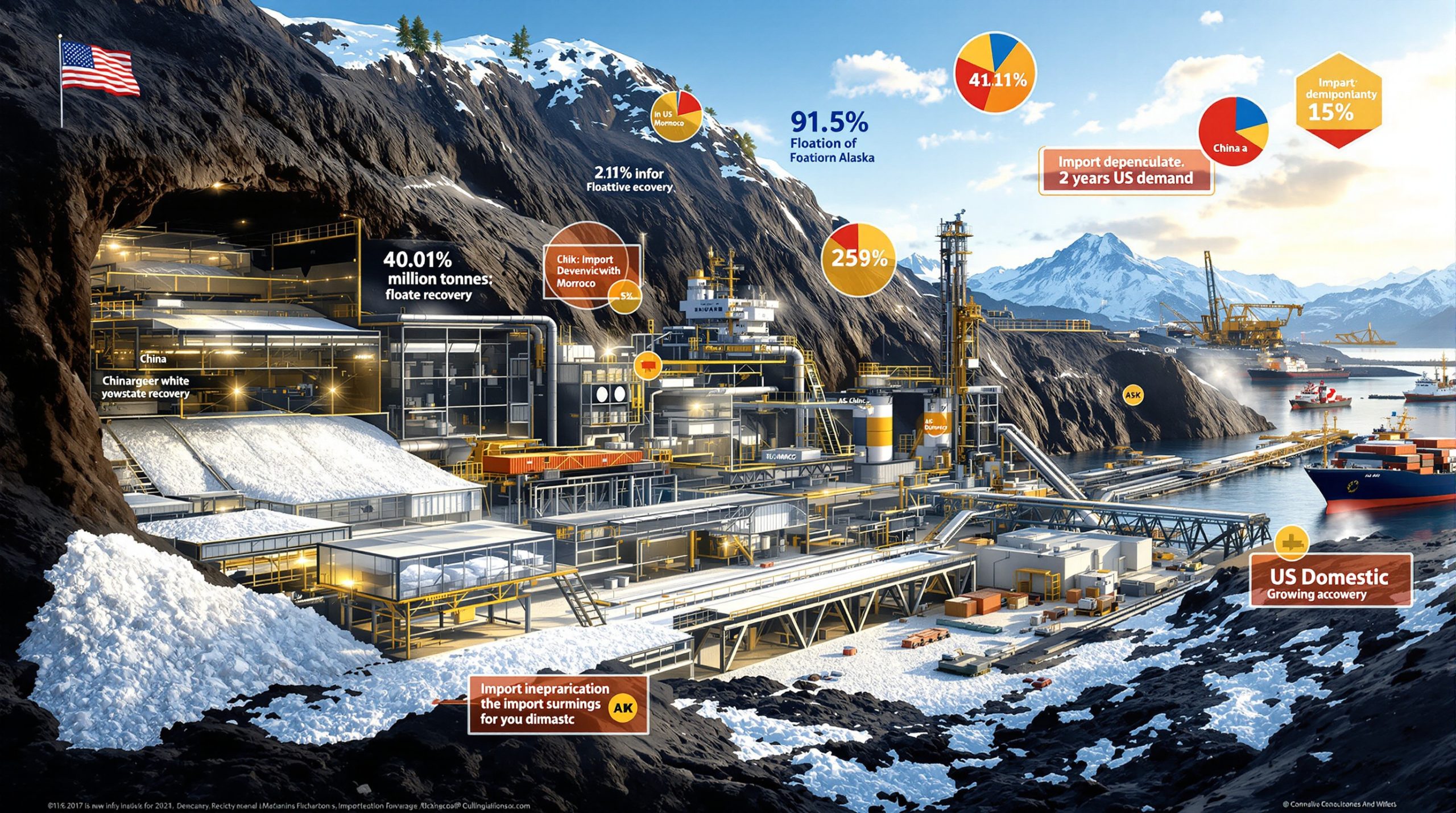What's Causing the Current Stainless Steel Market Deadlock?
The stainless steel industry is experiencing a significant market deadlock as of mid-2025, with several interconnected factors creating a perfect storm of challenges for stakeholders across the supply chain. According to the latest SMM Stainless Steel Daily Review, futures performance remains surprisingly resilient with the SS2508 contract holding at 12,745 yuan/mt (up 30 yuan/mt from the previous session), but this stability masks deeper structural issues.
The Traditional Off-Season Impact
Summer traditionally represents a cyclical slowdown for the stainless steel industry, and 2025 is proving no exception. This seasonal pattern has been exacerbated by current market conditions, creating a more pronounced impact than in typical years.
"Currently, the stainless steel market remains in the traditional off-season, with downstream demand failing to match current supply levels," notes the SMM Analyst Team in their July 9, 2025 market review.
The seasonal slowdown affects various downstream industries differently:
- Construction sector: Projects typically slow during summer months due to weather conditions in many regions
- Automotive manufacturing: Many facilities schedule maintenance during this period
- Consumer goods: Production often decelerates in anticipation of fall inventory buildups
- Industrial equipment: Capital expenditure decisions frequently pause during fiscal transitional periods
The predictable nature of these seasonal patterns allows for some planning, but the depth of the current demand weakness suggests more fundamental issues are at play beyond typical seasonality.
Price Stability Amid Pressure
One of the most intriguing aspects of the current stainless steel market deadlock is the relative price stability despite significant underlying pressures. The spot market for 304/2B coil in Wuxi shows premiums/discounts ranging between 25-225 yuan/mt, indicating some price discovery is still occurring despite transaction slowdowns.
This price resilience amid weakness can be attributed to several factors:
- Mills maintaining discipline: Major producers have resisted dramatic price cuts
- Futures market support: Financial market participants providing a floor
- Raw material cost floors: Despite weakening, costs prevent free-fall pricing
- Strategic inventory management: Controlled releases preventing market flooding
The stability represents a delicate balancing act, as too much pressure could trigger a more disruptive price correction if market fundamentals don't improve.
Supply-Side Challenges
The supply side of the equation presents equally significant challenges. Mills have completed their July contract volume allocations, which should theoretically provide some relief to the market. However, social inventory remains at elevated levels throughout the supply chain.
"The massive production base from earlier periods keeps current market supply at historically high levels," according to the SMM analysis. This inventory overhang creates persistent pressure on the market, with destocking progress occurring much more slowly than market participants had hoped.
Key supply-side factors include:
- Production momentum: Earlier capacity expansions created structural oversupply
- Inventory distribution: High stocks at mills, traders, and end-users
- Import considerations: International trade flows adding complexity
- Production cut hesitancy: Mills reluctant to significantly reduce output despite losses
The industry now faces a critical inflection point where production cut strategies will likely determine the timeline for market rebalancing.
How Are Different Stainless Steel Products Performing?
The current market deadlock isn't affecting all stainless steel products equally. A detailed examination of pricing across various grades and finishes reveals important distinctions in market dynamics and resilience.
Current Price Points Across Key Products
The latest market data from SMM's July 9, 2025 report provides a comprehensive snapshot of pricing across major product categories:
| Product Type | Wuxi Market (yuan/mt) | Foshan Market (yuan/mt) |
|---|---|---|
| 201/2B cold-rolled coils | 7,500 | 7,500 |
| 304/2B cold-rolled edge-trimmed coils | 12,700 | 12,700 |
| 316L/2B cold-rolled coils | 23,600 | 23,600 |
| 316L/NO.1 hot-rolled coils | 22,900 | 22,900 |
| 430/2B cold-rolled coils | 7,100 | 7,100 |
The price uniformity between Wuxi and Foshan—China's two primary stainless steel trading hubs—indicates nationwide market pressure rather than regional disparities. This consistency across geographical markets suggests the stainless steel market deadlock is systemic rather than localized.
Product-Specific Market Dynamics
The significant price differentials between product categories tell an important story about market segmentation:
Austenitic vs. Ferritic Grades
The substantial price gap between austenitic grades (304, 316L) and ferritic grade (430) reflects their different material compositions and applications:
- Austenitic grades (304, 316L): Containing higher nickel content, these command premium pricing due to their superior corrosion resistance and mechanical properties
- Ferritic grade (430): With lower nickel content, this more economical option faces greater competition from alternative materials during market downturns
Premium vs. Standard Grades
The remarkable price premium for 316L (23,600 yuan/mt) compared to standard 304 (12,700 yuan/mt) demonstrates market segmentation based on performance requirements:
- 316L applications: Critical environments requiring exceptional corrosion resistance (marine, chemical, pharmaceutical)
- 304 applications: General-purpose applications with moderate corrosion concerns
Cold-Rolled vs. Hot-Rolled Products
The price difference between 316L/2B cold-rolled (23,600 yuan/mt) and 316L/NO.1 hot-rolled (22,900 yuan/mt) highlights the value-added nature of further processing:
- Cold-rolled premium: Superior surface finish, tighter dimensional tolerances
- Processing costs: Additional energy, labor, and equipment depreciation
Despite these differentiations, all segments are experiencing transaction slowdowns, though premium grades appear to maintain better price discipline during the current market deadlock.
Why Are Transactions Remaining Sluggish?
The persistence of transaction slowdowns despite relatively stable pricing points to deeper structural issues in the stainless steel market. Understanding these factors provides critical insight into the nature of the current deadlock.
Demand-Side Factors
Multiple demand-side pressures are converging to suppress transaction volumes:
"Uncertainties such as US tariffs impact still loom large, leading to strong wait-and-see sentiment downstream," reports the SMM Analyst Team in their July 2025 review.
This tariff uncertainty has significantly impacted purchasing behavior, as buyers hesitate to commit to substantial volumes while facing potential trade policy shifts. The impact extends beyond direct US exports to affect the entire global supply chain, as material potentially diverted from US-bound shipments could flood alternative markets.
Beyond tariff concerns, seasonal patterns are also suppressing demand:
- Summer maintenance schedules: Many end-users schedule equipment downtime
- Reduced construction activity: Weather-related slowdowns in key regions
- Inventory management cycles: Many buyers drawing down existing stocks
- Budget timing: Fiscal-year considerations delaying purchasing decisions
The combination of cyclical seasonal factors with structural uncertainty has created a particularly challenging demand environment that shows little sign of immediate improvement.
Inventory Pressure Points
The elevated inventory levels throughout the supply chain represent another significant barrier to market recovery. While specific inventory-to-sales ratios aren't available in current market reports, qualitative assessments indicate concerning levels:
"Social inventory remains at relatively high levels," notes the SMM report, suggesting that the destocking process has significantly slowed during the current off-season period.
This inventory overhang creates a self-reinforcing cycle:
- High inventories reduce buyer urgency
- Reduced transactions slow destocking
- Persistent oversupply maintains price pressure
- Price pressure creates further buyer hesitation
Breaking this cycle typically requires a catalyst—either significant production discipline or a sudden demand surge—neither of which appears imminent according to current market indicators.
Sales Pressure Distribution
The sales pressure is being felt across all segments of the supply chain, creating competitive tensions that further complicate the market deadlock:
"Stainless steel mills, agents and traders [are] under heavy sales pressure," according to the SMM analysis, indicating that no segment of the distribution channel has escaped the challenging conditions.
This widespread pressure manifests differently across the supply chain:
- Mills: Balancing production cuts against fixed cost absorption
- Agents: Struggling with slow turnover and financing costs
- Traders: Competing aggressively for limited transaction volumes
- End-users: Leveraging market conditions for price concessions
The competitive discounting that results from this distributed pressure creates market uncertainty, as buyers may delay purchases in anticipation of further price concessions despite the relative stability in official pricing.
What's Happening with Raw Material Costs?
The raw material landscape plays a crucial role in the current stainless steel market deadlock, with complex dynamics affecting cost structures and production economics throughout the value chain.
Cost Support Erosion
A significant development in recent market conditions has been the weakening of key raw material prices, which traditionally provide a floor for finished product pricing:
"Raw material side also faces immense pressure… high-grade NPI and stainless steel scrap prices also weakened noticeably, further eroding cost support for stainless steel," reports the SMM Analyst Team.
This erosion of cost support has multiple implications:
- Reduced price floors: Lower input costs make it harder to justify maintaining finished product prices
- Margin compression: Mills face challenges in maintaining profitability even with lower costs
- Inventory valuation concerns: Downstream buyers hesitate to purchase if raw material trends suggest further finished product price declines
- Strategic purchasing shifts: Some mills delaying raw material procurement in anticipation of further price declines
The weakening of high-grade Nickel Pig Iron (NPI) prices is particularly significant, as nickel's role in alloys represents a substantial portion of production costs for austenitic grades like 304 and 316L.
Ferrochrome Market Dynamics
Ferrochrome—another critical stainless steel input—presents a more complex picture:
"High-carbon ferrochrome maintained stability in steel mill tenders, but affected by expectations for production cuts at steel mills, retail prices already fell below tender levels," according to the SMM report.
This divergence between tender and retail prices highlights market expectations:
| Ferrochrome Price Type | Market Trend | Influencing Factors |
|---|---|---|
| Steel Mill Tenders | Stable | Overseas production cuts providing support |
| Retail Market Prices | Declining | Domestic mill production cut expectations |
The stability in tender prices demonstrates how international market conditions (overseas production cuts) can provide temporary support, while retail price weakness reflects the anticipation of reduced domestic demand due to potential stainless steel production cuts.
Production Cost Implications
The combination of weakening raw material prices and finished product price pressure has created significant challenges for mill profitability:
"Stainless steel mills face great pressure… with losses widely reported," notes the SMM analysis.
These economic challenges are leading mills to consider several strategies:
- Production discipline: Reducing output to better match demand
- Raw material optimization: Adjusting input ratios to minimize costs
- Product mix shifts: Focusing on higher-margin specialty grades
- Regional market targeting: Concentrating on less-pressured geographical segments
The break-even analysis for mills varies significantly by product category, with commodity grades like 201 and 430 facing the most challenging economics due to thinner margins and greater competitive pressure.
What Are the Market Expectations Moving Forward?
As the stainless steel market continues to navigate this challenging deadlock, stakeholders are closely monitoring several key indicators that could signal the path toward eventual recovery.
Production Cut Impacts
Perhaps the most significant development on the horizon is the emerging news of production cuts across the industry:
"The market is waiting to see how the supply-demand relationship will recover after stainless steel mills cut production," according to the SMM Analyst Team.
These production adjustments represent a critical inflection point for the market, though their effectiveness will depend on several factors:
- Scale of cuts: Percentage reduction relative to current oversupply
- Duration of discipline: Sustained commitment vs. temporary adjustments
- Market segment focus: Which product categories see the largest reductions
- Coordination level: Individual vs. industry-wide approach
Historical precedent suggests that production cuts can effectively rebalance markets, but the timeline varies significantly based on the depth of the initial imbalance and the disciplined execution of production adjustments.
Supply-Demand Outlook
The path to supply-demand rebalancing involves multiple variables that will determine the recovery timeline:
Short-term factors (1-3 months):
- Immediate impact of announced production cuts
- Seasonal demand improvements as summer ends
- Inventory destocking progress at various supply chain points
Medium-term factors (3-6 months):
- Resolution of tariff uncertainties
- Downstream project activations
- Raw material price stabilization
- Gradual inventory normalization
Long-term factors (6+ months):
- Structural capacity adjustments
- Shifting end-use demand patterns
- Global trade flow stabilization
- New application development
The most likely scenario suggests a gradual improvement in market conditions beginning in late Q3 2025, with more meaningful recovery potentially emerging in Q4 if production discipline remains consistent and seasonal demand improvements materialize.
Price Trend Projections
While specific price projections remain challenging in such volatile conditions, several scenarios emerge based on production adjustments and market responses:
Scenario 1: Effective Production Discipline
- Mills maintain announced production cuts
- Raw material prices stabilize
- Gradual inventory reduction
- Modest price strengthening by Q4 2025
Scenario 2: Limited Production Adjustment
- Inconsistent implementation of cuts
- Continued raw material weakness
- Persistent inventory overhang
- Extended period of price stagnation
Scenario 3: Demand-Led Recovery
- Unexpected demand surge (e.g., policy stimulus)
- Accelerated inventory absorption
- Raw material price rebounds
- Faster price recovery potential
Key indicators to monitor for price trend shifts include weekly transaction volumes, mill operating rates, social inventory levels, and iron ore surplus analysis along with other raw material price movements—particularly for nickel and ferrochrome.
FAQ: Stainless Steel Market Conditions
How long is the current market deadlock expected to last?
The current stainless steel market deadlock coincides with the traditional summer off-season, with recovery likely dependent on production cut effectiveness and seasonal demand improvements. Based on current market conditions and historical patterns, meaningful improvement could begin to emerge in late Q3 2025, with more substantial recovery in Q4 if production discipline remains consistent.
Key factors affecting the timeline include:
- Scale and consistency of production cuts
- Pace of inventory destocking
- Resolution of tariff uncertainties
- Seasonal demand recovery post-summer
Monitoring weekly transaction volumes and social inventory levels will provide the earliest indicators of market inflection.
What factors would trigger a market recovery?
A meaningful market recovery would require a combination of several elements:
- Effective production cuts: Sustained discipline from major mills
- Inventory normalization: Reduction in both mill and social inventories
- Demand improvement: Post-summer seasonal uptick in consumption
- Cost support: Stabilization in raw material markets
- Policy clarity: Resolution of US-China trade impacts and uncertainties
External catalysts could include infrastructure stimulus programs, unexpected supply disruptions, or significant changes in global trade policies affecting material flows.
The most realistic path to recovery involves gradual improvement through consistent production discipline rather than sudden market shifts, though the latter remains possible given the complex global factors at play.
How are stainless steel mills responding to current market conditions?
Mills are implementing various strategies to navigate the challenging market environment:
- Production adjustments: News of cuts has emerged, though scale varies
- Contract management: July allocations completed, focusing on core customers
- Raw material purchasing: More cautious procurement given price weakness
- Product mix optimization: Potential shift toward higher-margin specialties
- Pricing flexibility: Strategic discounting while maintaining official price stability
- Cost control measures: Operational efficiency improvements
Most mills are reporting losses under current conditions, creating strong incentives for production discipline if the situation persists. The effectiveness of these responses will significantly influence the market recovery timeline.
What impact are international factors having on the domestic stainless steel market?
International factors are playing a crucial role in the current market deadlock:
"Uncertainties such as US tariffs still loom large, leading to strong wait-and-see sentiment downstream," notes the SMM Analyst Team.
This tariff uncertainty has created significant hesitation in purchasing decisions, as buyers evaluate potential impacts on global trade flows and pricing structures.
Additionally, international raw material dynamics are influencing domestic markets:
- Overseas ferrochrome production cuts providing temporary support
- Global nickel market trends affecting domestic NPI pricing
- International stainless steel production adjustments impacting export/import bal
Want to Invest in the Next Major Mineral Discovery?
Discovery Alert's proprietary Discovery IQ model delivers real-time notifications when significant mineral discoveries are announced on the ASX, turning complex data into actionable investment insights. Explore why historic discoveries can generate substantial returns by visiting the dedicated discoveries page and begin your 30-day free trial today to position yourself ahead of the market.




